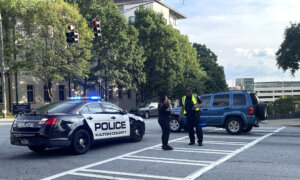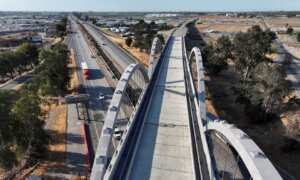The California Department of Food and Agriculture plans to strip fruit from trees from more than 2,000 residences in San Bernardino County to combat the invasive Oriental fruit fly.
The department is preparing to start the large-scale fruit removal in the Redlands area of San Bernardino County.
All host fruit will be removed from properties. The department will leave trees in place, however.
The pests attack over 230 crops, including citrus and other fruits, nuts, vegetables, and berries, according to the department.
The crops threatened by the Oriental fruit fly include apple, apricot, avocado, bell pepper, fig, grape, grapefruit, lemon, lime, melons, nectarine, orange, peach, pear, and several others.
“If left unchecked, the Oriental fruit fly could become permanently established and cause billions of dollars worth of losses annually, which would significantly impact California’s food supply,” the department said in a press release Jan. 18.
The Oriental fruit fly is widespread through much of the mainland of southern Asia and neighboring islands. Nearer to the United States, the pests were first recorded in Hawaii in 1946 and now attack nearly every commercial fruit crop grown in the state, except pineapples, according to the department.
The California food and agriculture department is partnering with the U.S. Department of Agriculture and local agricultural commissioners to break the lifecycle of the invasive pest, which lays eggs in fruit that develop into larvae, posing a threat to residential and commercial citrus.
“Residents in the Redlands area are strongly urged to cooperate with the agricultural officials working on the project, as fruit removal is mandatory,” the department said in the press release.
The state’s removal program is expected to continue until late February. Residents affected will receive a notice 48 hours prior to fruit removal, according to the department.
Work crews may consist of state food and agricultural department employees, federal agriculture department employees, California Conservation Corps crews, and private contractors.
The affected area is north and south of Interstate 10, with a northern boundary of East Highland Avenue, a western boundary at the intersection of Garden and Elizabeth streets, an eastern boundary of Alta Vista Drive, and a southern boundary of Silver Leaf Court.
Residents in the affected area are asked not to remove the fruit themselves and to not move produce from their property. If fruit falls from trees, residents should double-bag it and throw it in a trash bin, instead of in the green waste bins or other organic destinations, the state said.














